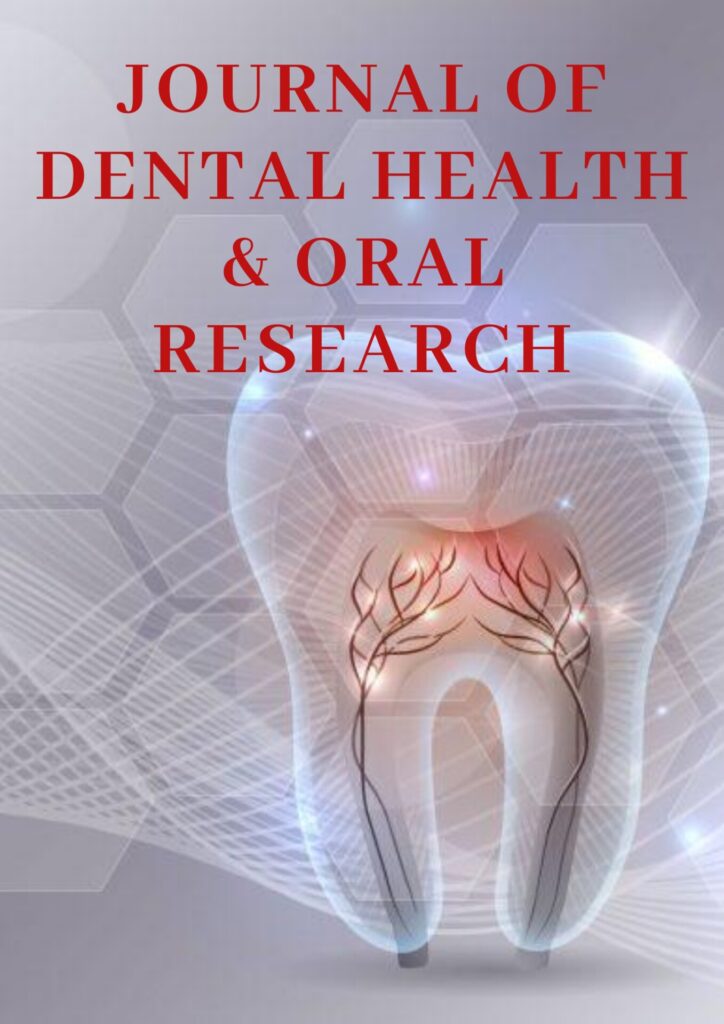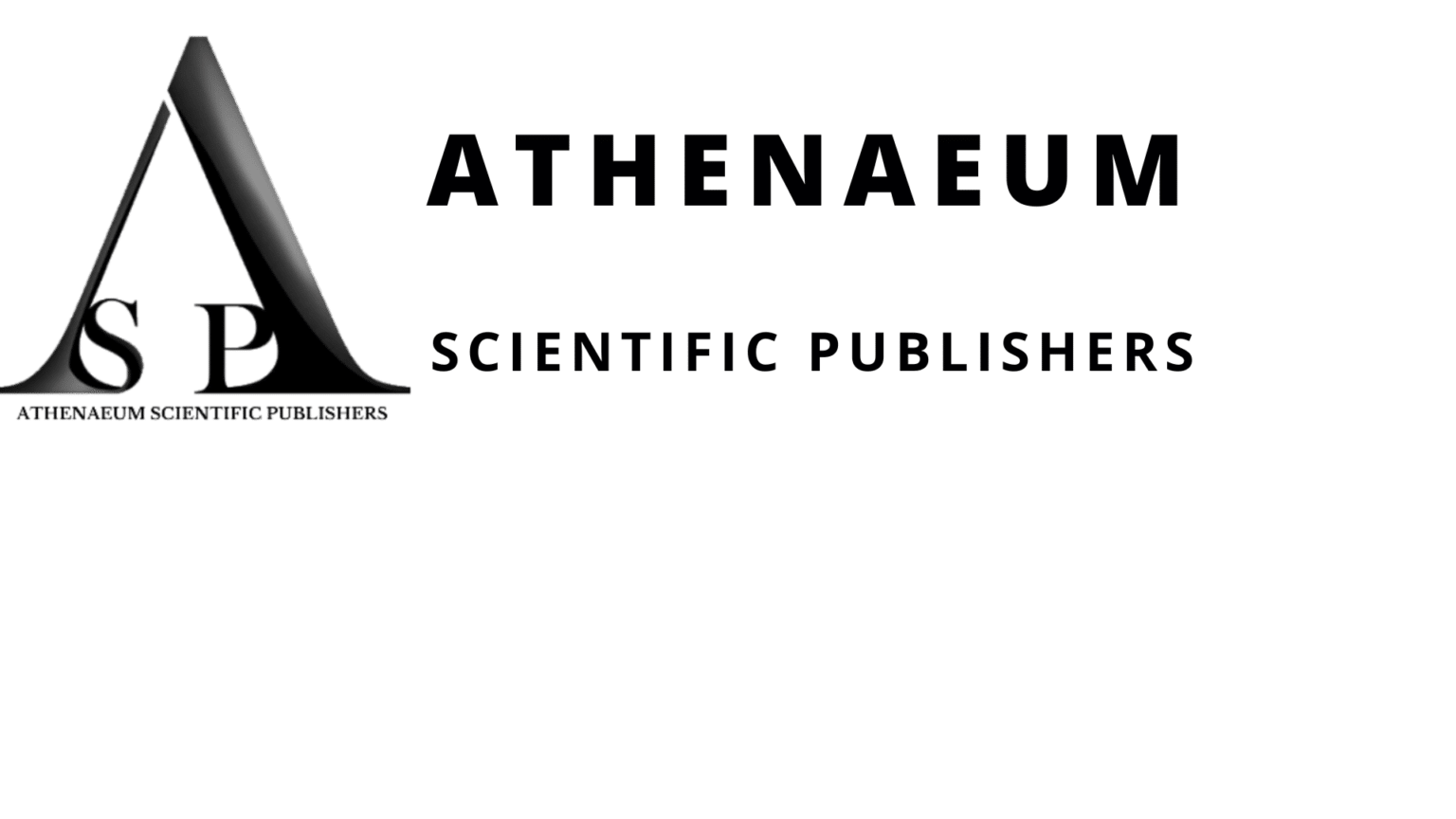Case Report | Vol. 6, Issue 1 | Journal of Dental Health and Oral Research | Open Access |
Maxillary Sinus Lift with Summer Technique and Short Implants: A Case Study
Luisana Rodriguez1*, Leonardo Acosta Piña1
1Universidad de Carabobo, Facultad de Odontología, USA
*Correspondence author: Luisana Rodriguez, Universidad de Carabobo, Facultad de Odontología, USA;
E-mail: [email protected]
Citation: Rodriguez L, et al. Maxillary Sinus Lift with Summer Technique and Short Implants: A Case Study. J Dental Health Oral Res. 2025;6(1):1-6.
Copyright© 2025 by Rodriguez L, et al. All rights reserved. This is an open access article distributed under the terms of the Creative Commons Attribution License, which permits unrestricted use, distribution, and reproduction in any medium, provided the original author and source are credited.
| Received 14 February, 2025 | Accepted 05 March, 2025 | Published 12 March, 2025 |
Abstract
The summer sinus lift technique known as crestal sinus lift functions as a vital surgical method for treating severe bone atrophy of the posterior maxilla to enable implant tooth placement success. The research examines the effectiveness of Summer Technique utilized together with short implants for raising bone height and achieving implant stability. Postoperative clinical examinations together with radiographic evaluations at month 8 and year 8 after surgery showed major bone tissue enhancement along with integrated implants that maintained their stability over time. This research proves the dependability of this technique to achieve better implant dentistry results through enhanced functionality and aesthetic outcomes.
Keywords: Sinus Lift; Summer Technique; Short Implants; Maxillary Atrophy; Implant Stability
Introduction
The dental implant treatment has improved substantially through time to deliver reliable enduring results. However, implant placement in atrophic posterior maxilla remains a challenge due to limited bone height and density. Several surgical approaches have been developed to overcome these anatomical constraints, including sinus floor elevation and the use of short implants [1,2].
The lateral window technique stands as the main surgical method for sinus augmentation because it provides implant placement bone volume. The lateral window technique brings increased complications which includes sinus membrane perforation as well as extended healing periods and postoperative morbidity [2,3]. Medical practitioners adopted the transcrestal sinus lift (Summers technique) because it offers minimally invasive surgery that reduces potential risks yet delivers equivalent results to lateral window procedures when adding bone graft materials [1].
Scientists developed short implants to operate as a viable treatment option which decreases the need for extensive bone grafting in serious cases of maxillary atrophy. The survival rates of short implants match those of longer implants and become even better when these implants are combined with minimally invasive sinus augmentation techniques according to Pjetursson, et al. and Cannizzaro, et al. [4]. Modern implant surface modifications employ sandblasting and acid-etching techniques that lead to superior osseointegration thus improving long-term treatment outcomes especially in hard-to- treat anatomical areas [5].
This case report evaluates the clinical outcomes of short implants provided through the summer technique in a patient with severe maxillary atrophy. An accumulation of proof demonstrates the positive effects of implant-assisted approaches with minimal invasiveness because they lower surgical dangers and decrease treatment durations and enhance implant sustainability.
Material and Methods
The research received authorization from the Universidad de Carabobo Institutional Review Board under Approval No. UC-OD2023-001. Before enrollment the patient received and approved the consent form for participation.
Patient Selection Criteria
Inclusion Criteria
- Patient with severe posterior maxillary atrophy and insufficient bone height for conventional implants
- The procedure occurs on a patient receiving sinus lift through the summer technique while receiving implant placement at reduced lengths
- The study has a minimum clinical and radiographic observation period of 8 months
- The patient must have good oral health and no active infections in the implant area
- The participant must have signed their agreement before this surgery and subsequent medical checks
Exclusion Criteria
- The procedure is not suitable for patients who have uncontrolled systemic diseases because such conditions prevent normal bone healing processes (e.g., uncontrolled diabetes, severe osteoporosis)
- Patients with a history of radiotherapy in the maxillofacial region
- The procedure is not suitable for patients with active chronic sinusitis or for those who have sinus pathologies which oppose the treatment
- The procedure needed alternative methods when severe perforation of the sinus membrane occurred while performing the elevation
- These patients failed to remain under the necessary postoperative care for 8 months
Materials
- Concave Osteotomes: Essential for controlled sinus floor elevation
- The subantral space receives bone graft material which supports the process of bone regeneration
- The Bicon Integra-Ti® short implants have limited vertical bone applications with a 6.0 mm body and 5.0 mm length and 3.0mm well diameter
- Diagnostic Tools: Clinical evaluation, radiographic imaging and occlusal analysis for preoperative planning and postoperative assessment
Methods
- Preoperative Evaluation: Clinical assessments as well as images seen in Fig. 1,2 enable healthcare providers to analyze the quality of bone tissue and conditions within the sinus cavity before surgery
- Crestal Access: The procedure begins with an exact crestal incision that leads to mucoperiosteal flap elevation
- Initial Osteotomy: Pilot drilling performed involves drilling through the bone tissue yet refraining from penetrating the sinus membrane as demonstrated in Fig. 3
- Sinus Floor Elevation: The procedure of sinus floor elevation requires osteotomes to safely elevate the sinus membrane by expanding the osteotomy area
- Bone Graft Placement: Placing graft material supports the natural process of bone regeneration
- Implant Insertion: Medical staff insert short dental implants after precise placement procedures that lead to proper primary stability (Fig. 4)
- Stability Check: Clinicians verify the right implant position through manual stability tests together with radiographic results (Fig. 5)
- Postoperative Care: Patients obtain extensive care directions after surgery while they attend all scheduled postoperative visits
Case Results
- Bone Augmentation: X-ray examinations revealed vital postoperative bone height developments throughout the treatment
- Implant Stability: The implant achieved outstanding integration together with primary stability according to results based on clinical and radiographic examinations as shows in Fig. 6
- Complications: Postoperative complications were minimal because doctors successfully managed temporary pain with suitable treatments
- Patient Satisfaction: The patients expressed strong satisfaction with the implant’s both functional quality and appearance (Fig. 7)
- Long-term Outcomes: The implants experienced long-term stability from the time of the 8-month and 8-year follow-ups without any discernible bone deterioration
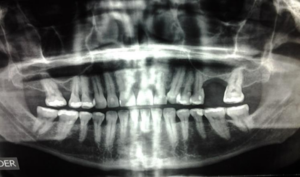
Figure 1: Panoramic radiograph showing the absence of a dental piece and pneumatization of the maxillary sinus.
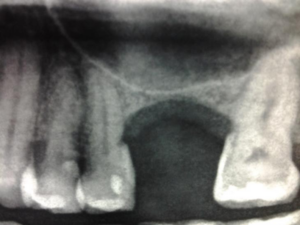
Figure 2: Periapical radiograph showing the absence of tooth #14 and pneumatization of the left maxillary sinus. 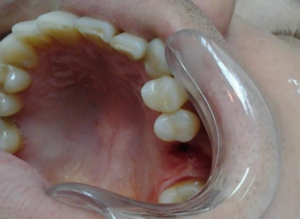
Figure 3: Initial osteotomy performed to prepare the implant site while preserving the integrity of the sinus membrane.
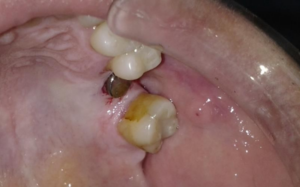
Figure 4: Intraoperative view of the implant and healing abutment demonstrating stability and correct positioning.
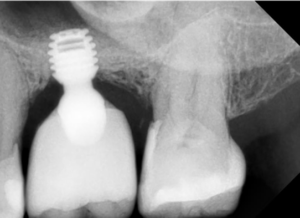
Figure 5: Immediate postoperative radiograph showing the sinus membrane elevation and placement of bone graft material and implant in the subantral space.
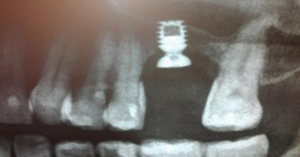
Figure 6: Radiographic evaluation at 8 months postoperatively, confirming stable bone integration around the implant site. 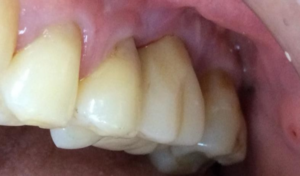
Figure 7: Three-month postoperative clinical assessment illustrating occlusal loading and soft tissue healing around the implant.
Discussion
The Summer Technique represents a safe way to perform minimally invasive sinus augmentation through crestal access paths which serves as a substitute method for lateral window procedures.
Evidence shows that using short implants together with osteotome-driven sinus elevation delivers reliable treatment results with decreased surgical complications. Implant success rates between crestal and other approaches demonstrate equivalence because bone grafting procedures along with membrane elevation help improve osseointegration and implant life span.
Multiple studies present data showing increased benefits from this method than what traditional lateral window augmentation provides. The crestal approach enables minimization of intraoperative complications yet delivers comparable implant survival effectiveness like traditional approaches according to Esposito, et al. The fundamental importance of bone graft materials was explained by Wallace, et al., to reinforce the success of this minimally invasive implant technique.
The long-lasting nature of the present research demonstrates that short implants successfully maintain their stability when treating maxillary atrophy. The crestal surgical approach stands out because it produces minimal surgical stress thus appealing to both clinical practitioners and treating patients [5-12].
Conclusion
The implementation of summer technique along with short implants provides dentists with a minimally invasive method to treat maxillary atrophy. Although associated with low surgical risks and excellent implant success statistics this surgical method delivers valuable patient benefits above traditional full- scale procedures. According to Cannizzaro, et al., this methodology presents strong advantages because it improves bone integration and maintains patient comfort and accelerates recovery times. The success of this treatment depends on a precise surgical execution because it reduces complications primarily due to sinus membrane perforations according to Wallace and Froum. Research-based evidence shows that this procedure produces similar implant survival outcomes as standard bone augmentation procedures. Patient selection needs to be done with care because severely resorbed maxillary bone lead to decreased outcome predictability according to Pjetursson, et al. Expert control of membrane elevation together with bone grafting material application leads to successful results by promoting implant stability according to Wallace and Froum.
Conflict of Interest
The authors have no conflict of interest to declare.
Reference
- Esposito M, Grusovin MG, Maghaireh H, Worthington HV. Interventions for replacing missing teeth: Different times for loading dental implants. Cochrane Database of Systematic Reviews. 2013(3).
- Wallace SS, Froum SJ. Effect of maxillary sinus augmentation on the survival of endosseous dental implants. Annals of Periodontol. 2003;8(1):328-43.
- Pjetursson BE, Tan WC, Zwahlen M, Lang NP. A systematic review of the success of sinus floor elevation and survival of implants inserted in combination with sinus floor elevation: part I: lateral approach. J Clinical Periodontol. 2008;35:216-40.
- Cannizzaro G, Felice P, Leone M, Ferri V, Viola P, Esposito M. Immediate versus early loading of 6.5 mm-long flapless-placed single implants: a 4-year after loading report of a split-mouth randomised controlled trial. Euro J Oral Implantol. 2012;5(2).
- Zuza EP, Barroso EM, Carrareto AL, Pires JR, Carlos IZ, Theodoro LH, et al. The role of obesity as a modifying factor in patients undergoing non‐surgical periodontal therapy. J Periodontol. 2011;82(5):676-82.
- Carelli S, Passaretti A, Petroni G, Zanza A, Testarelli L, Cicconetti A. Petogodišnje praćenje kratkih implantata ugrađenih u atrofičnu maksilu s istodobnim transkrestalnim podizanjem dna sinusa. Acta stomatologica Croatica: Int J Oral Sciences and Dental Medicine. 2021;55(2):177-85.
- Ali A. Short dental implants: an emerging concept in implant treatment. Quintessence Int. 2014;45(6):16.
- Monje A, Chan HL, Fu JH, Suarez F, Galindo‐Moreno P, Wang HL. Are short dental implants (< 10 mm) effective? A meta‐analysis on prospective clinical trials. J Periodontol. 2013;84(7):895-904.
- Esposito M, Felice P, Worthington HV. Interventions for replacing missing teeth: augmentation procedures of the maxillary sinus. Cochrane Database of Systematic Reviews. 2014(5).
- Wallace SS, Froum SJ. Effect of maxillary sinus augmentation on the survival of endosseous dental implants. A systematic review. Ann Periodontol. 2003;8(1):328-43.
- Mester A, Onisor F, Di Stasio D, Piciu A, Cosma AM, Bran S. Short implants versus standard implants and sinus floor elevation in atrophic posterior maxilla: A systematic review and meta-analysis of randomized clinical trials with≥ 5 years’ follow-Up. J Personalized Medicine. 2023;13(2):169.
- Esposito M, Felice P, Worthington HV. Interventions for replacing missing teeth: augmentation procedures of the maxillary sinus. Cochrane Database of Systematic Reviews. 2014(5).
Author Info
Luisana Rodriguez1*, Leonardo Acosta Piña1
1Universidad de Carabobo, Facultad de Odontología, USA
*Correspondence author: Luisana Rodriguez, Universidad de Carabobo, Facultad de Odontología, USA; E-mail: [email protected]
Copyright
Luisana Rodriguez1*, Leonardo Acosta Piña1
1Universidad de Carabobo, Facultad de Odontología, USA
*Correspondence author: Luisana Rodriguez, Universidad de Carabobo, Facultad de Odontología, USA; E-mail: [email protected]
Copyright© 2025 by Rodriguez L, et al. All rights reserved. This is an open access article distributed under the terms of the Creative Commons Attribution License, which permits unrestricted use, distribution, and reproduction in any medium, provided the original author and source are credited.
Citation
Citation: Rodriguez L, et al. Maxillary Sinus Lift with Summer Technique and Short Implants: A Case Study. J Dental Health Oral Res. 2025;6(1):1-6.

